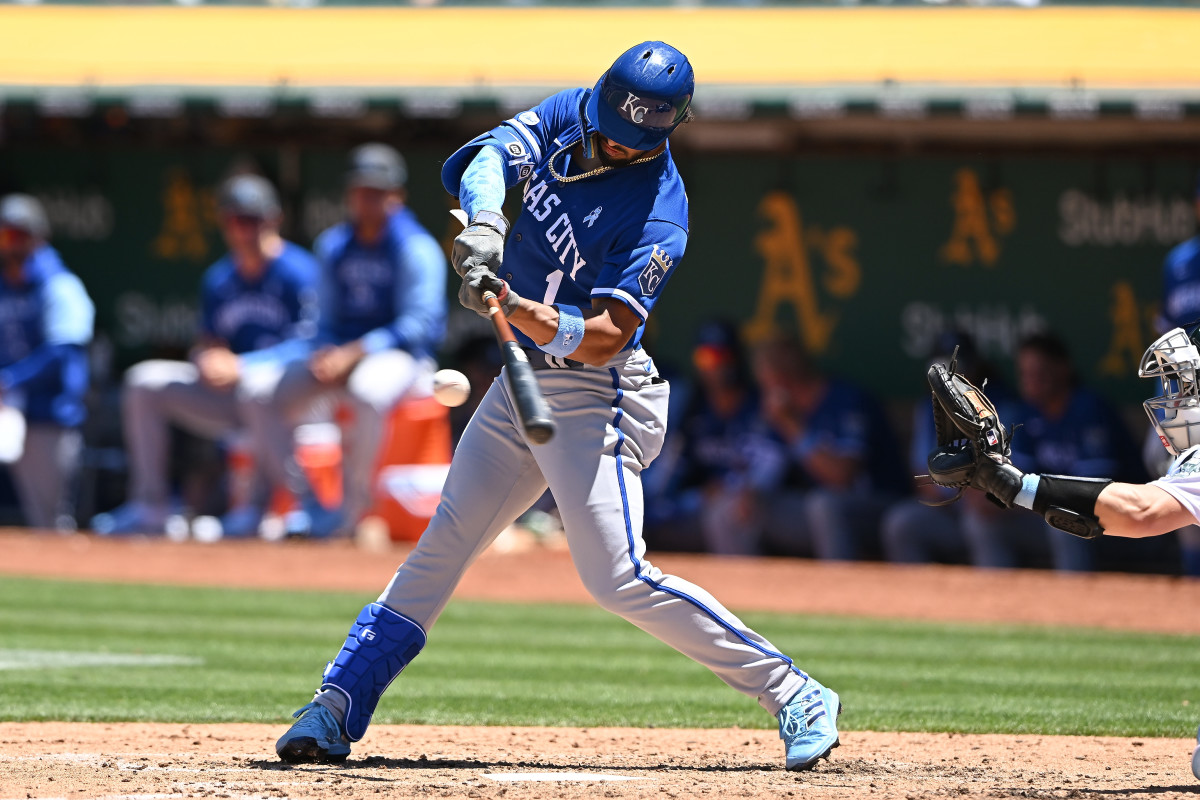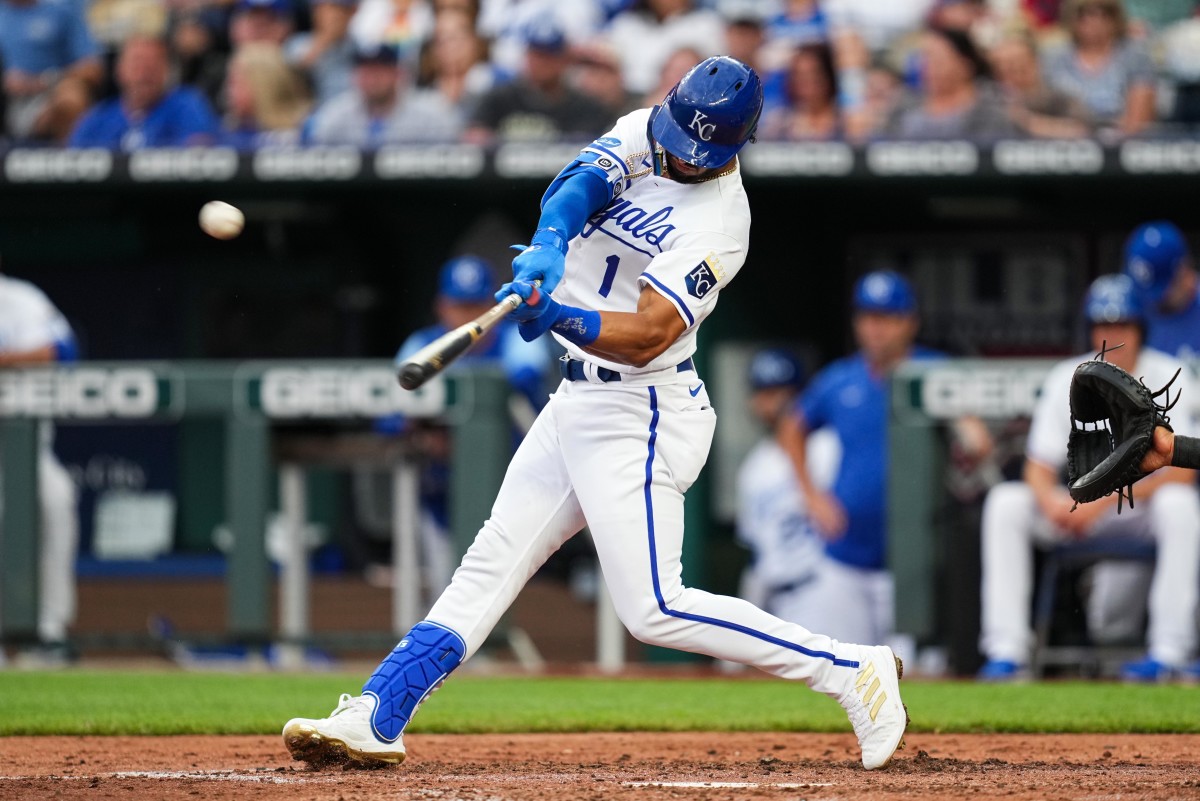What’s Wrong With MJ Melendez? It’s Simple, Yet Complicated
As the Kansas City Royals' youth movement continues and the club puts faith in its up-and-coming franchise cornerstones to produce, there will undoubtedly be growing pains for just about every non-veteran. Despite his extremely respectable season numbers, MJ Melendez fits that description as well.
In 47 games entering Tuesday's play, Melendez is slashing .225/.324/.394 with a 105 wRC+ and six home runs. With Carlos Santana out of the picture, the Royals' rookie catcher now boasts the highest walk rate on the team (13%) and is one of two full-timers to have one at or above 10%. His maturity and patience are showing up in major ways for Kansas City this year, but there's only one problem.
His first two months have been both extremely alike and nothing alike all at the same time. All advanced stats used in this article are from FanGraphs, unless otherwise noted.

In 24 games in the month of May, Melendez got on base at a 32.6% clip while striking out 21.3% of the time. In 23 games in June, those numbers are 32.3% and 22.9%, respectively. The 23-year-old's batted ball directions in both months have remained almost entirely consistent, as have his plate discipline numbers (swing percentages in and out of the zone). There isn't an issue with being too erratic in regards to decision-making in the batter's box, nor is Melendez struggling to make contact with the ball.
Melendez's launch angle is also strikingly similar in both samples. He doesn't appear to be trying to pull the ball too much or change his approach in any discernable way from a profile standpoint. Despite that, his June batting average is .190 — a huge dip from the .259 average he posted in May. He's walking nearly twice as much now, though, posting a 9% walk rate in May and a 16.7% one in June. In that same comparison, his line drive rate has increased from 17.7% to 20.7%.
As far as positives are concerned, however, that's about the end of the road.
The most obvious problem is that Melendez isn't hitting the ball hard enough in June, even with the slight increase in line drive percentage. That has been the major contributing factor in the stark difference between his SLG and OPS in each month (.481 and .807 vs. .304 and .627). After averaging a 92.2 mph exit velocity in May, this month's figure is 87.8 mph. His barrel rate is less than half in Act II of what it was in Act I, and his hard-hit rate has dropped from 50% to 27.6% between the two samples. As a result, Melendez's extra-base hit total from May (11) hasn't even come close to being matched in June (5).
In May, Melendez put up nearly identical percentages of batted balls with medium contact (45.2%) and hard contact (43.5%) while not making much soft contact at all (11.3%). In June, he's seen his soft contact percentage rise to 20.8% while also experiencing a similar rise in medium contact percentage (55.2%). That doesn't leave much room for hard contact, thus limiting his ability to drive for power and garner hits in general. When combined with a spiked ground-ball rate (37.1% vs. 44.8%), the only way to make up for some of the difference is to either hit the ball harder, get luckier, or both. He isn't doing either.

After having a .293 BABIP last month, outperforming his batting average by .34, that number is down to .232 this month. Melendez's luck isn't making up that aforementioned difference enough now, and he's seen his infield hit rates plummet. (13% in May, 3.8% in June). At the same time, his infield fly-ball rate has more than doubled (7.1% vs. 15%).
What does one get when more grounders are being hit in general, but they aren't being hit as hard and aren't resulting in infield knocks? What about when more fly-balls are hit in the infield? How about once they're paired with more soft and medium contact, then accompanied by not enough luck? Struggles. A lot is working against Melendez right now, which totally explains why he isn't producing at the same level he did to begin his rookie campaign.
So... what's the fix? Making harder contact is a great start. Not only would that make infield batted balls more difficult to field, but it would lead to more power into the gaps and — potentially — out of the ballpark. If Melendez begins connecting with more emphasis, a lot of his issues will begin to go away. He doesn't have a plate discipline problem, and regression to the mean in regards to luck can also be a part of it. The wear and tear of an MLB season can also be a factor, although it's still relatively early for that to be the case. Considering what has and hasn't changed, the solution may be simple (yet complicated).
